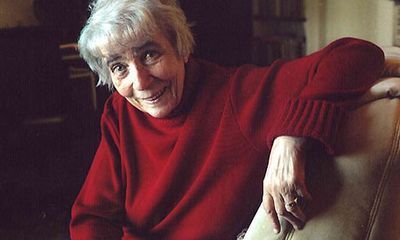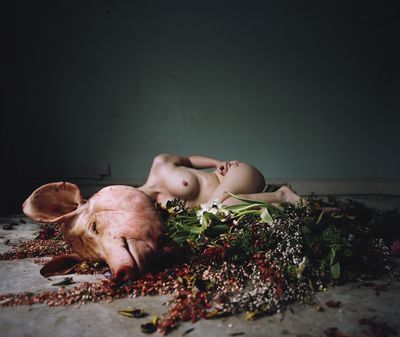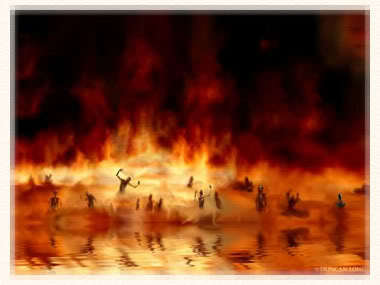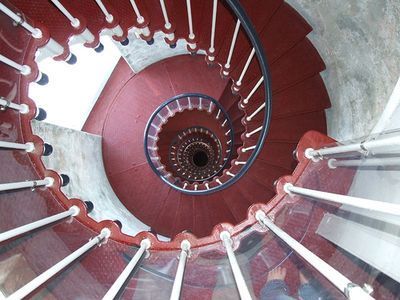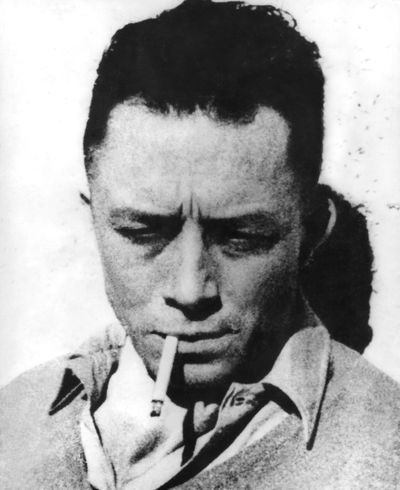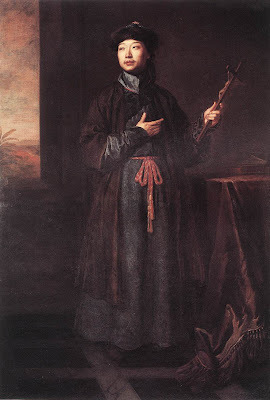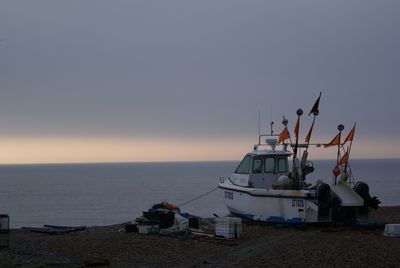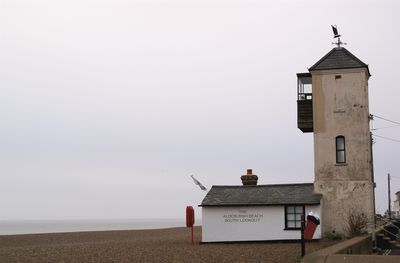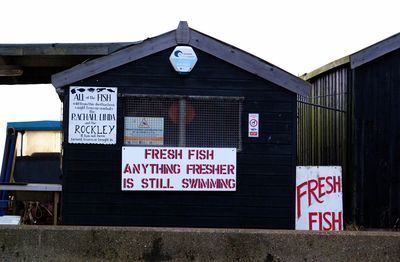Peter Stothard's Blog, page 74
March 31, 2012
'A Rose is a Christine Brooke-Rose'
by J. C.
It has been said before, but now must be said again: A Rose is a Christine Brooke-Rose is a Christine Brooke-Rose. The novelist and essayist, who has died aged eighty-nine, was that rare voice in British fiction, a self-conscious experimentalist. In a sequence of books, beginning with The Languages of Love (1958), she explored avenues more familiar to post-war French authors than to their English counterparts. Brooke-Rose's novels often had single word titles: Out, Such, Between, Next, Subscript; one that gives the flavour of her writing is Textermination (1991). For almost half a century, she was an occasional contributer to the TLS. In the last essay she wrote for us (December 31, 1999), punctuated by "Narrative Parentheticals" and "Speakerless Sentences", Brooke-Rose said she had long since retired from the theory wars, but still she felt impelled to add this on behalf of her idol, Alain Robbe-Grillet:
"Innovation has a strange way of surviving. In those distant days (the late 1950s), there was active prejudice in England, led by C. P. Snow, against the new fashion from France. But who even mentions Snow now, or his followers? For if the prejudice against experiment persists, the novel nevertheless has changed, and if Robbe-Grillet himself is also perhaps no longer read, some of his technique has insidiously survived, in a way that Snow's has not."
In January 1963, her poem "Today the Acupuncturist" appeared in the TLS. Bearing witness to her admiration for Ezra Pound (on whom she wrote a book, A ZBC), it contains the Chinese ideogram (grain + mouth = harmony) which must have given the compositor a headache. These are the opening lines:
"Today the acupuncturist found my Achilles' heel
above the right fourth toe. His electric pin
sang E sharp minor through my left side in
the mount of Venus to the North Pole gland
below the chin."
The next week, a witty letter in verse appeared, from one Keith Spence of Kent:
"Though mandarins no doubt in China
Intone their songs in E sharp minor,
Here such a key has not been written
From Palestrina down to Britten".
Prosaically put, E sharp minor doesn't exist (it's F minor). Brooke-Rose responded in turn, exhibiting her liking for wordplay while she was at it: "That is the point", she said of the needle's enharmonic hit.
An excellent account of her work by Ali Smith appeared in our Fiction pages on March 24, 2006. She spoke of Brooke-Rose's love of punning, and ended with some delightful wordplay of her own: "Rose is the Christine Brooke-Rose is the Christine Brooke-Rose. She's the definite article". That would serve as an epitaph, had Brooke-Rose not provided the perfect one herself: "And there I am content to let the Meta rest".
March 30, 2012
“The art of dining well is no slight art . . . ”
By Thea Lenarduzzi
After confronting death, few things can be as life affirming as a good meal, and to take it in the stately setting of Sutton House, East London, is especially invigorating. The house was built in 1535 for Sir Ralph Sadleir – protégé of Thomas Cromwell (the relationship is portrayed by Hilary Mantel in Wolf Hall) and Principal Secretary to Henry VIII – who reputedly held lavish banquets to entertain his fellow courtiers.
Last night we dined in the spirit of Sir Ralph as part of a collaboration between the Horsebox Gallery and the Art of Fine Dining, which brought together new art works inspired by the Vanitas tradition and the excesses of courtly life:
In court to serve decked with fresh array,
Of sug'red meats feeling the sweet repast:
The life in banquets, and sundry kinds of play,
Amid the press of lordly looks to waste,
Hath with it join'd oft times such bitter taste.
That who so joys such kind of life to hold,
In prison joys fett'red with chains of gold.
Thus the ghost of Sir Thomas Wyatt, an ambassador for Henry VIII, albeit between incarcerations in the Tower, may not have been too far from Sir Ralph’s Great Chamber. Channelling him, we “cloak[ed our] care but under sport and play”, gathered around a centrepiece of wilted flowers, burning candles and a skull – designed by Alice Hodge, lest we forget the abyss that awaits us all – and began
to eat . . . .
First came roast quail, to be dismembered and ripped from the bone with our fingers. Next, was crab butter in a wooden bowl (or a bolle of tre), with a white, round loaf. As small as the palm of one’s hand, it would have been known to Sir Ralph and his guests as a manchet, the first recipe for which appeared in The Good Huswifes Handmaide in 1588. Bread of the wealthy, it was made using only the finest, twice-sifted ingredients.
“Tell me what you eat, and I will tell you what you are”, intoned Anthelme Brillat-Savarin some 200 years later, which made the fourth course – bollito misto of cotechino, brisket and ox tongue – sit uneasy. But it was a welcome variation on the Tudor cockyntryche, a pièce de résistance made by stapling together the parts of different animals – generally a large capon and a pig – to create a beast worthy of Dr Frankenstein, only tastier. (Recipe here, for those expecting guests this weekend.)
“Delphine’s Call” by the photographer Sophia Schorr-Kon hung in the room next door.
Waiting for the bus home at the end of the night, I put together Montaigne, Wyatt and Brillat-Savarin and came up with Miss Piggy: “Never eat more than you can lift.”
"The art of dining well is no slight art . . . "
After confronting death, few things can be as life affirming as a good meal, and to take it in the stately setting of Sutton House, East London, is especially invigorating. The house was built in 1535 for Sir Ralph Sadleir – protégé of Thomas Cromwell (the relationship is portrayed by Hilary Mantel in Wolf Hall) and Principal Secretary to Henry VIII – who reputedly held lavish banquets to entertain his fellow courtiers.
Last night we dined in the spirit of Sir Ralph as part of a collaboration between the Horsebox Gallery and the Art of Fine Dining, which brought together new art works inspired by the Vanitas tradition and the excesses of courtly life:
In court to serve decked with fresh array,
Of sug'red meats feeling the sweet repast:
The life in banquets, and sundry kinds of play,
Amid the press of lordly looks to waste,
Hath with it join'd oft times such bitter taste.
That who so joys such kind of life to hold,
In prison joys fett'red with chains of gold.
Thus the ghost of Sir Thomas Wyatt, an ambassador for Henry VIII, albeit between incarcerations in the Tower, may not have been too far from Sir Ralph's Great Chamber. Channelling him, we "cloak[ed our] care but under sport and play", gathered around a centrepiece of wilted flowers, burning candles and a skull – designed by Alice Hodge, lest we forget the abyss that awaits us all – and began
to eat . . . .
First came roast quail, to be dismembered and ripped from the bone with our fingers. Next, was crab butter in a wooden bowl (or a bolle of tre), with a white, round loaf. As small as the palm of one's hand, it would have been known to Sir Ralph and his guests as a manchet, the first recipe for which appeared in The Good Huswifes Handmaide in 1588. Bread of the wealthy, it was made using only the finest, twice-sifted ingredients.
"Tell me what you eat, and I will tell you what you are", intoned Anthelme Brillat-Savarin some 200 years later, which made the fourth course – bollito misto of cotechino, brisket and ox tongue – sit uneasy. It was a welcome variation on the Tudor cockyntryche, a pièce de résistance made by stapling together the parts of different animals – generally a large capon and a pig – to create a beast worthy of Dr Frankenstein, only tastier. (Recipe here, for those expecting guests this weekend.)
"Delphine's Call" by the photographer Sophia Schorr-Kon hung in the room next door.
Waiting for the bus home at the end of the night, I put together Montaigne, Wyatt and Brillat-Savarin and came up with Miss Piggy: "Never eat more than you can lift."
March 28, 2012
What is the abyss?
By THEA LENARDUZZI
"What is the abyss?" Well, according to Google it has something to do with these pictures . . . .
Sitting on a small stage in the packed Gate Cinema in Notting Hill, about to begin a Q & A with Werner Herzog that was going to be streamed live to over thirty venues across the UK, the interviewer probably felt like he was teetering on the edge of an abyss all of his own. So, perhaps, he should be forgiven, perhaps, for opening with an almost exact repetition of an observation often made by the filmmaker himself, most recently, the previous morning on BBC Radio 4's Start the Week: "It strikes me that all of your films could have been called 'Into the Abyss'". It is a good point, though. The abyss could be the Amazonian rainforest, Nosferatu's lair, anywhere Herzog went with his extraordinary leading actor, Klaus Kinski.
Into the Abyss: A tale of death, a tale of life, Herzog's latest feature length documentary, considers Michael Perry and Jason Burkett who are both convicted of committing a triple murder in Conroe, Texas in 2001, when they were eighteen years old.
Perry is on Death Row, while Burkett is serving a life sentence. The story is familiar: broken homes; absent fathers; no education; limited choices and the wrong ones made. But the film is unmistakably Herzog's – from the pffuuuuut-ing of wind instruments on the soundtrack, to the unscripted (or overtly scripted) intrusions of nature ("Please describe an encounter with a squirrel", he asks of a priest who attends executions).
I am a Q & A sceptic, especially when they try to deal with such weighty, open-ended material. A barmaid Herzog interviews in the neighbouring town of Cut and Shoot offers a quote that may do for the director, too: "I see so many things but I don't deal with them ." Not conclusively, anyway. The notion of questions and answers sits awkwardly with a man who insists that "facts will never illuminate you; truth will", and for whom "Cinéma Verité is not right; it's the accountant's truth". Herzog's truth is usually found in fiction ("I can tell a lie", he smiles), which yields an "ecstatic truth" – a "deeper truth . . . embedded in poetry".
Questions? Certainly. "God is everywhere in this film" – with the perpetrators and their families as well as the victims, asserts the interviewer. "Yes . . . but where was God?" asks Herzog, quoting Pope Benedict on his visit to Auschwitz in 2006. Melyssa, who met and married Burkett during his life sentence, is expecting his child. The baby "was made" while Burkett was behind bars and they could only hold hands; "it's a mystery", she explains, like the rainbow which spread across the prison gates, proving that "he must be innocent" and that they were meant to be.
But last night, the only definite answer came in response to a question from the audience: "Are you afraid of death?" ; "No. Period. Can we leave it at that?" Well, that's a question, too. Can we leave it at that? Herzog's obsession with the abyss would suggest otherwise. (I suppressed the urge to follow up with "really? Not even a little?")
March 26, 2012
Cover versions
BY DAVID HORSPOOL
Last week, I was editing a review by James Fergusson on the subject of dust-jackets (it's very good: should be in the TLS shortly). Until relatively recently, it turns out, collectors were pretty sniffy about them. Nowadays, dust-jackets (mustn't call them "wrappers", apparently), are an integral part of the value of modern first editions.
But for those of us who propose merely to read books, rather than trade them, covers, as I propose to call them, are supposed to fulfil their traditional function of drawing the reader in, and giving us an idea of the contents. And as there seems to be no slacking off in the rate of publication, you would have thought that publishers' design departments would make every effort to ensure their product stands out from the rest.
In fact, the opposite tendency seems to hold sway. It took five minutes of not very systematic searching among the review copies in the TLS offices to discover that three particular themes are currently very popular, or "trending" as I'm learning to call it.
Number one: Legs (see above). The first book I recall with a legs-only cover was Andrea Ashworth's memoir Once in a House on Fire. The most recent book I have actually read whose dust-jacket could have been entered in a knobbly-knees competition was Will Eaves's s splendid This Is Paradise (yes, Will Eaves used to work at the TLS, but the novel really is excellent). Most of the legs belong to girls, and it has been suggested that if the feet are turned in, that means pathos, if not downright misery. One foot kicked up, and you can expect laughs, or at least some bitter-sweetness. As you can see, designers are now branching out into boys' legs, but still no faces.
Next, an interestingly specific genre. The Backs of Women Looking Out over Water:
And, in case readers think I am skewing my results towards novels by women (and specifically Marika Cobbold, whose designers can at least claim to be creating a visual "brand"), my final offering is a masculine one: some thrillers, or Tiny Men Walking into the Distance books, as they should henceforth be known:
Now, of course we know about books and covers and judgement, but may I suggest it might make it easier at least to distinguish between novels if the people who design the covers pop into a bookshop from time to time, notice what's already there, and see if they can come up with some new ideas? It's dispiriting to think that, actually, they probably do so already, and have decided that we readers can be handily categorized as "Legs", "Water Gazers" and "Walkers Away". Any less cynical explanations, or indeed any more examples of cover themes, will be gratefully entertained.
March 22, 2012
Camus censored
By ADRIAN TAHOURDIN
Albert Camus cut his journalistic teeth on the Alger Républicain, before switching to the Soir républicain, a two-page daily sheet he set up with his friend Pascal Pia. It first hit the streets in September 1939. He was twenty-six at the time.
As editor-in-chief, Camus wrote almost the whole paper and, according to his biographer Olivier Todd, signed himself variously "Vincent Capable", "Demos", "Irène", "Nero" and "Cesare Borgia". Todd describes the sheet as "iconoclastic". It soon fell victim to the state censor, a certain Col Florit. Todd writes: "Camus and his newspaper accepted censorship about military matters, but 'we do not accept mental censorship'".
Macha Séry, a journalist on Le Monde, recently uncovered a box in the Archives nationales d'outre-mer in Aix-en-Provence, containing Camus's unpublished articles from the Soir républicain. She wrote about her discovery in Le Monde of March 17. Séry's cache includes an eloquent manifesto in defence of press freedom, dated November 25, 1939, which never saw the light of day. It opens "It's difficult to talk about press freedom today without being accused of being a Mata-Hari, . . . of being Stalin's nephew". Camus goes on "We don't see Hitler . . . using Socratic irony. It remains the case that irony is a weapon without precedent against those with too much power".
Later "No one wants, in twenty-five years time, to repeat the experience of 1914 and 1939".
On January 10, 1940 Camus was summoned by M Bourrette of the Algiers Special Police and told that publication of the paper would be suspended, after 117 issues. Pascal Pia returned to Paris. Within months Camus would find himself in Paris too.
March 21, 2012
Re-Joycing in Our Jim
BY J. C.
There has been so much re-joycing going on, since the major works of James Joyce entered the public domain on January 1, that it seems almost permissible to use that irritating coinage. A recent James Joyce Quarterly offered news of a Chinese translation of Finnegans Wake. New Chinese characters will be required, Congrong Dai wrote, "each component indicating one of the possible meanings that Joyce put into his portmanteau words". A Polish Wake is also in the works.
From the O'Brien Press in Dublin comes an edition of Dubliners with photographs interleaved in the text – infra dig, surely – and a preface recasting Our Jim as just one of us: "rich and poor, old and young, men and women . . . Dubliners is interested in all".
An actual revision of one of Joyce's works, unthinkable only a few months ago, has been undertaken by the small French publisher La Nerthe of Toulon, which has issued a bilingual edition of Chamber Music with the thirty-four poems arranged in what is claimed to be Joyce's preferred sequence.
The first edition of Chamber Music (1907) followed a running order determined by the author's brother, Stanislaus. According to Philippe Blanchon of La Nerthe, editor and translator of Musique de chambre, however, Joyce's own arrangement "had a very precise intention". This is more or less confirmed by the Faber Poems and Shorter Writings (1991), in which A. Walton Litz explains: "As the songs accumulated, Joyce made several tentative arrangements, the last and most important [dating] from 1905".
Readers and scholars may test M Blanchon's claim that the "original plan", which he reimposed, "gives the poems a more coherent place in the Joycean corpus". What used to be No I in the sequence, a three-stanza poem beginning
Strings in the earth and air
Make music sweet;
Strings by the river where
The willows meet
is now relegated to No II, whereas the top spot is taken by what was formerly XXI, the six-line verse that opens "He who hath glory lost, nor hath / Found any soul to follow his". The old No II – "The twilight turns from amethyst / To deep and deeper blue" – slips to IV. No III, "At that hour when all things have repose", stays where it was, but twenty-five of the remaining poems are newly placed.
The attractive volume, priced at 12 euros, also contains Pomes Penyeach. The contents are laid out with the translations opposite the originals. M Blanchon has given the French a simple tone, "somewhere between Elizabethan song and Verlaine". Here is the "Strings in the earth" stanza in his version:
Des cordes dans l'air et sur terre
Font une douce musique;
Des cordes au bord de la rivière
Où les saules se rejoignent.
March 19, 2012
Best yellow jackets
BY PETER STOTHARD
On Saturday lunchtime at the Bodleian Library we were discussing the most powerful arguments for financing the humanities.
There are so many well-meant but death-guaranteeing efforts — the jobs provided by the publishing industry, the effectiveness of Latin for the training of a banker's mind, the export potential of dictionaries.
Anyone who has read a university fund-raising prospectus in these difficult years will be able to add their own dismal examples.
But how can we do better?
One Oxford luncher mentioned Cicero's speech Pro Archia, the locus classicus as it were.
It is one of the speeches in the new Folio Society edition for which I wrote the introduction last year.
So this remarkable document was fresh in my blog and mind.
But a Ciceronian argument for the interconnection of art and other life, while once transformational for Petrarch, will struggle in most places now.
The occasion of Saturday's lunch, for an enthusiastic band of bibliophiles and fund-raisers for books, was Thomas Bodley's birthday, marked this year in the Divinity School.
The theme was Asian. As was the dress code.
Your blogger wore a waistcoat of cream silk elephants, the first such item of clothing he can recall around his body for many decades.
Others, most notably Bodley's wonderful American librarian, Sarah Thomas, wore chinoiserie of varyingly restrained and exotic sorts. To support them give here.
The greatest commitment to Asian dress came for Oxford's American Vice-Chancellor, Andrew Hamilton, who wore a full jacket of bright yellow silk and also made an argument for the humanities that, in my collection of arguments at least, was as fresh as the cloth on his back.
He spoke of the Bodleian's seventy five years of collecting Chinese manuscripts in the 17th century before anyone in the library, and probably in the whole of England, could read them or had any idea what they meant.
The story of Shen Fu-Tsung (pictured above) and of the tumultuous time in 1687 when he became the first Chinese scholar to explain the Bodleian collection, is a powerful thing in itself, the subject of our pre-lunch lecture by Jonathan Spence (along the lines of this one).
But even more powerful, argued the man in the yellow jacket, himself a chemist in pre-vice-chancelloring times, was the earlier commitment of the Bodleian to the unknown, its investment in what might (but only might) turn out to matter, the money spent on humanities because a humanity was what a Chinese collection might (but would not necessarily) be.
The lunch ended with a swing in our silk-clad steps.
March 16, 2012
Aldeburgh, part 2: A word with Kathryn Hughes
BY MICHAEL CAINES
As mentioned previously: Aldeburgh might be windy and wave-beaten, but it hosts an impressive literary festival. One of the running themes this year was life-writing of one sort or another – from novelists (Adam Mars-Jones and Jon Cantor) discussing their own relationship to the protagonists of their novels, to a former Chancellor of the Exchequer-turned memoirist (Alistair Darling).
The biographer Kathryn Hughes was also there; we sat in a hotel and talked about Lives and Life-writing. Those capital letters daunted me into asking all kinds of absurd questions, which Kathryn took very well, all things considered . . . .
Along with teaching at the University of East Anglia and writing for the Guardian, it turns out that the inspiration for her current work lies partly in the biographical essay, as it was practised many years ago by Lord David Cecil et al. Such essays might be pleasurable to read still, but they may also be dismissed as "quite quaint". Can the form now offer more than just a bellelettrist ramble around a person's life? Are they the antidote to the traditional cradle-to-grave Life? Assuming anybody needs an antidote, that is. "Look at how popular Claire Tomalin's Dickens book is", Kathryn says, "clearly, people do really enjoy [cradle-to-grave] life stories."
But the field is also more open now for would-be biographers: at the University of East Anglia, where she teaches, "what they seem to be really excited by is the idea that anything is possible – that they can follow their subject in all sorts of ways. They could just write about six months in the life or they could follow their subjects on a particular journey. There are infinite ways of doing it".
For Professor Hughes, then, such excursions down the "byways of biography" reflect a new openness in the genre; they enable her to pursue biographical enquiries that, in a conventional Life, would "bend the main narrative out of shape": "you get a completely different sort of story". That could mean tracing the origins of something as superficial yet significant as an unspoken dress code, or researching George Eliot's early life and working out its relationship to her fiction. That's quite a change from the situation familiar to those "middlebrow lady biographers" of the mid-twentieth century, whose neglected volumes turn up from Abebooks with a squashed moth inside. (Again, like the biographical essayists, Kathryn is quite fond of these, I think.)
(Digression: we're interrupted by an old chap looking for his pen. Has that biographer made off with my pen?, he's thinking. Anything's possible. But I digress . . . .)
Surely that woeful notion that literary biography is somehow a disreputable, unnecessary business no longer has any purchase?
"The classic argument against biography was always: it stops people reading the work", Kathryn says, "it actually presents them with rehashed gossip, which they read instead of going back to the work."
I hope she's about to say that this is quite untrue.
"I think there's an element of truth there."
Well, yes, I suppose . . .
"It would be madness to say that that's not the case."
Absolutely.
"In the decades of New Criticism . . . the idea of reading biographically about something would have seemed ridiculous and rather silly. I do think, thanks to New Historicism and other intellectual movements, you can move in and out of novels and lives, and you can make connections. It's not naff anymore . . . ."
It can even make itself useful around the place: "Mrs Gaskell's biography of Charlotte Bronte was so dominant that everybody just assumed that those poor girls sat in the parsonage with the wind howling round, never went out." But Juliet Barker's work on the Brontes "shows that Haworth isn't cut off, they get three newspapers a day, a great traffic of carriages . . . so in that sense, biography does quite useful things, because then we read Jane Eyre differently".
I thought of that point the following day, when Claire Tomalin repeated a point from her cradle-to-grave Life of Dickens, about how Jane Eyre might have influenced him, even though he didn't read it. . . .
March 14, 2012
A12 to Aldeburgh
BY MICHAEL CAINES
I'm afraid I distrust book festivals; perhaps you feel the same way. Book festivals, for one thing, are not necessarily bookish. It's a commonplace piece of scoffing now to say that many of them have been overrun by celebrities rather than writers (who only end up in a Posy Simmonds cartoon, captured at the moment of absolute abjection), although presumably the celebrities are merely intended to compensate for the inexplicably sparse attendance at the poetry readings.
About ten years ago, writing in the TLS, P. J. Kavanagh described his indignation on behalf of Norman MacCaig, "who read almost as well as he wrote", at such an event:
"People listened attentively to his wry Edinburgh tones, watched his weather-beaten face, that of an old sea captain concentrated on a horizon behind their heads, applauded loudly at the end, and left – without buying a single one of his books. Possibly they were better listeners than I am, and could retain his words in their heads . . . ."
While MacCaig himself "did not seem to mind, or notice", I think I would have taken Kavanagh's side. But then, a friend said: let's put this to the test. A charming drive eastwards along the A12 will take you into Suffolk, and ultimately to the sea, to Aldeburgh, where you can have your faith restored. Not me, I replied. And that's how a sportsman's bet turned into a full-scale investigation . . . .
In 1905, the TLS had declared Aldeburgh to be a "little, windy, wave-beaten town", with a "single literary glory", George Crabbe – but at least the town was about to celebrate the poet's sesquicentenary. Nowadays, if Aldeburgh feels inclined to raise the tone (or lower it, depending on your point of view), it can always borrow a few writers for the weekend: the weekend just gone, that is, saw the eleventh Aldeburgh Literary Festival.
Literary festivals take many forms – from the venerable affair in Cheltenham and the field-bound delights of Hay-on-Wye, to the summery hipness of Port Eliot, the short-story-focussed Charleston, and the single-author-focussed form such as the imminent one celebrating Robert Walser in Newcastle upon Tyne (refreshingly, it's free entry for all events, donations are welcomed). Run by the good people of the Aldeburgh Bookshop, the Aldeburgh festival mostly takes place at a single venue, the Jubilee Hall, and attracts a local crowd (cf. the pilgrimages people make to Wales or Cornwall). It's about as charming (I grudgingly admit to my travelling companion) as this sort of thing gets.
The programme was almost entirely given over to speakers who actually write for a living (what remarkable creatures they are, moving and speaking just like real human beings), with life-writing a prominent theme across all three days. Claire Tomalin perambulated entertainingly around the subject of – what else? – Charles Dickens, speaking of his daily walks of ten or twenty miles, his devotion to the very best causes (not just ragged-school education for the impoverished minds of street urchins, but soap for their bodies), his writing two books at a time, his experiments in mesmerism. How did he do it all? She raises the question herself: was he one of those lucky souls who can run on only a few hours' sleep, like Margaret Thatcher?
(This is marvellous, I said. If only the locals wouldn't give us that who-be-those-strangers look whenever we walked into a room. Is it the Dickensian waistcoat and monocle? Too much?)
Some of the biographers had the kindness to stop and talk. One of them was Alexandra Harris, who, to the delight of a full house, told tales of a lively and life-loving Virginia Woolf – a portrait of the author as a woman of both "exquisite" and "catholic" tastes, that seemed to surprise some people in the audience. When asked an all-too-conventional question – "what's your favourite novel by Virginia Woolf?" – she responded with magnificently Bluestocking-ish glee, throwing up her hands and exclaiming "luxurious question!" (The answer was To the Lighthouse.)
Between I managed to fit in longer conversations with both Kathryn Hughes, the biographer of George Eliot and Mrs Beeton, and Eugene Rogan, the author of The Arabs: A history, and hope to post an observation or two from those interviews soon.
For now, I'll just end by noting that it was on this well-heeled, well-tended part of the coast, at Aldeburgh, that P. J. Kavanagh had his "prejudice" against such events dented, at a poetry festival: "an intensive two days of readings from morning till night, with gaps between in which the audience can get to know the readers and each other; a sort of group exhilaration is generated, word-drunk". That was a poetry festival, mind. Getting word-drunk is just what you'd expect from such a crowd. . . .
Peter Stothard's Blog
- Peter Stothard's profile
- 30 followers


